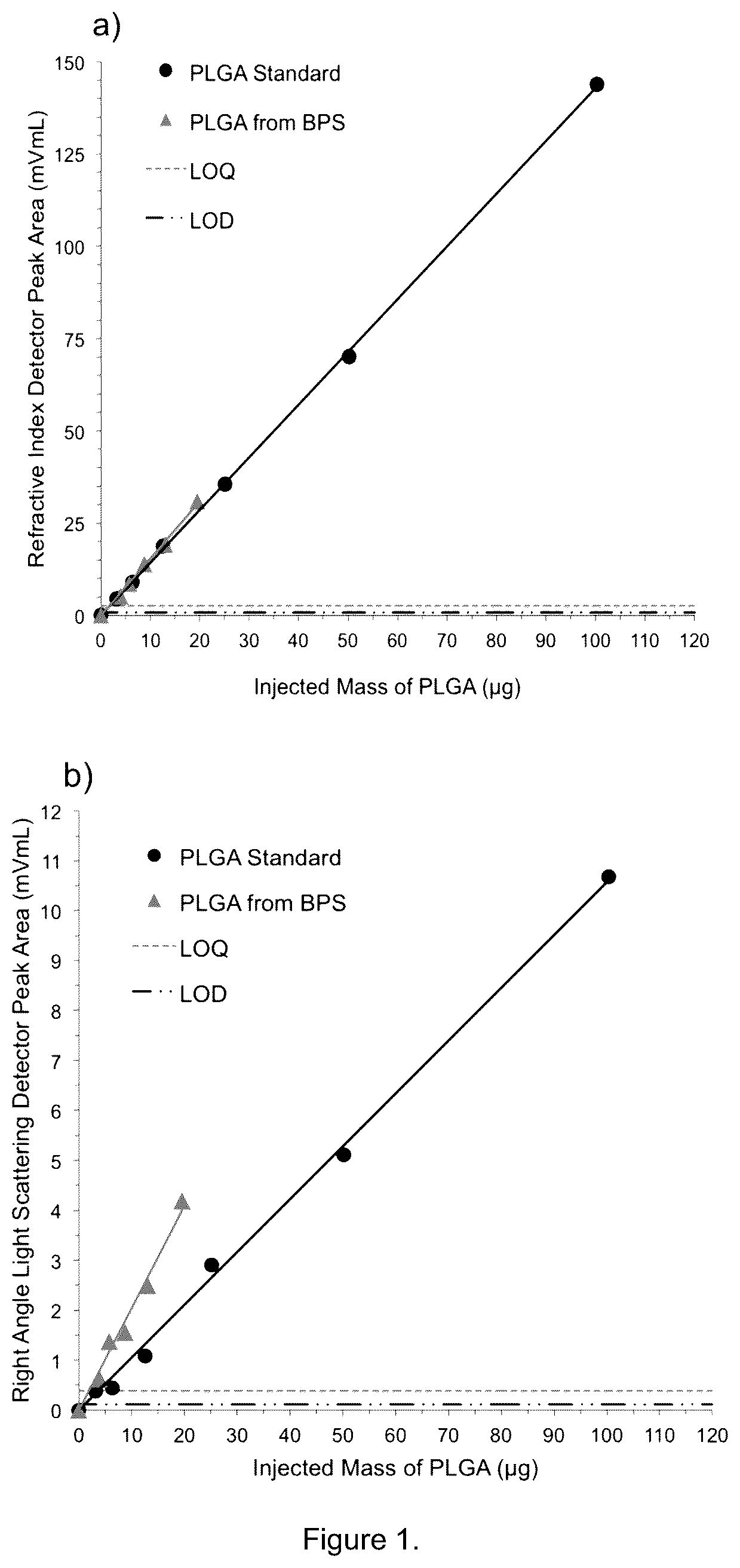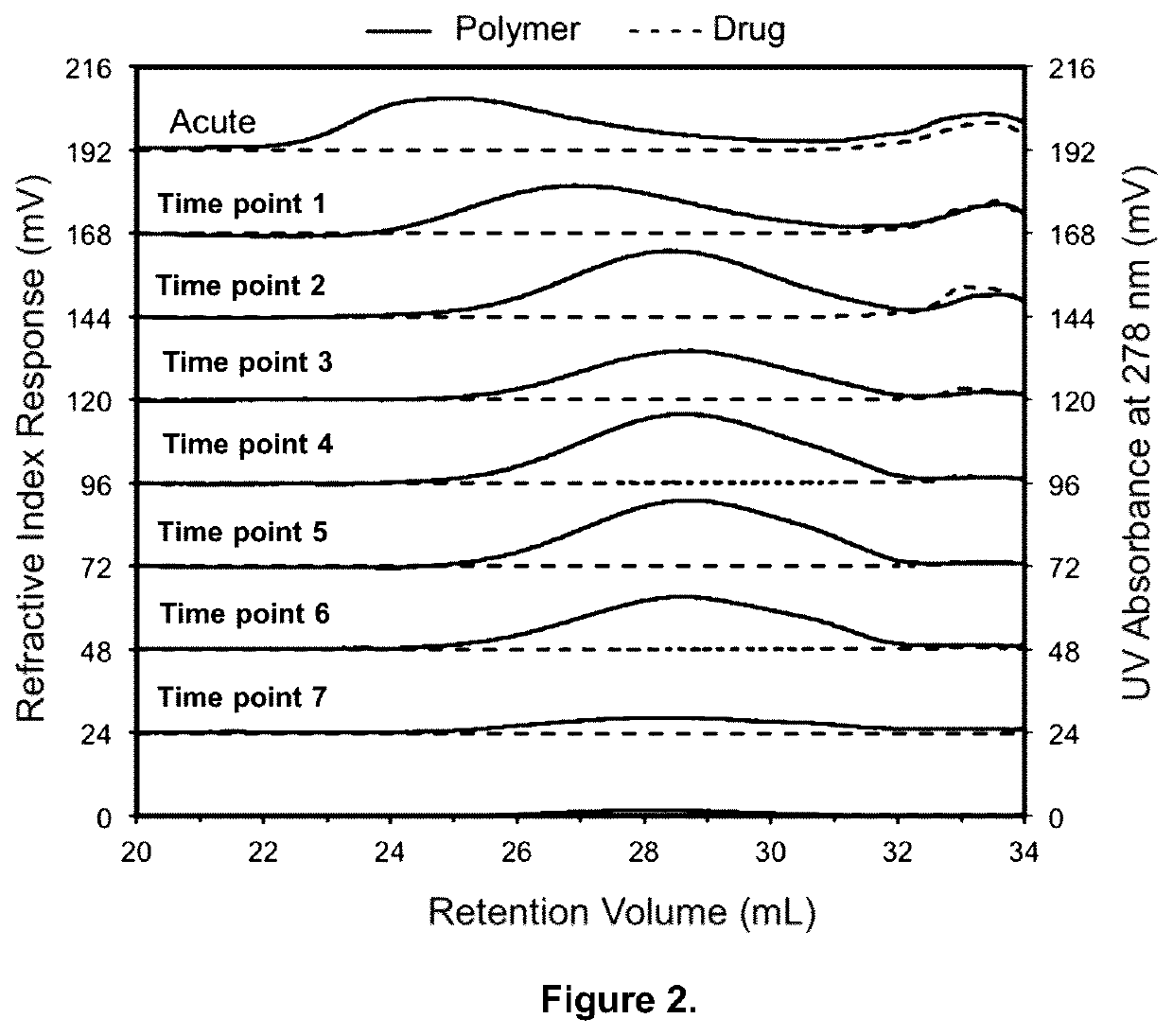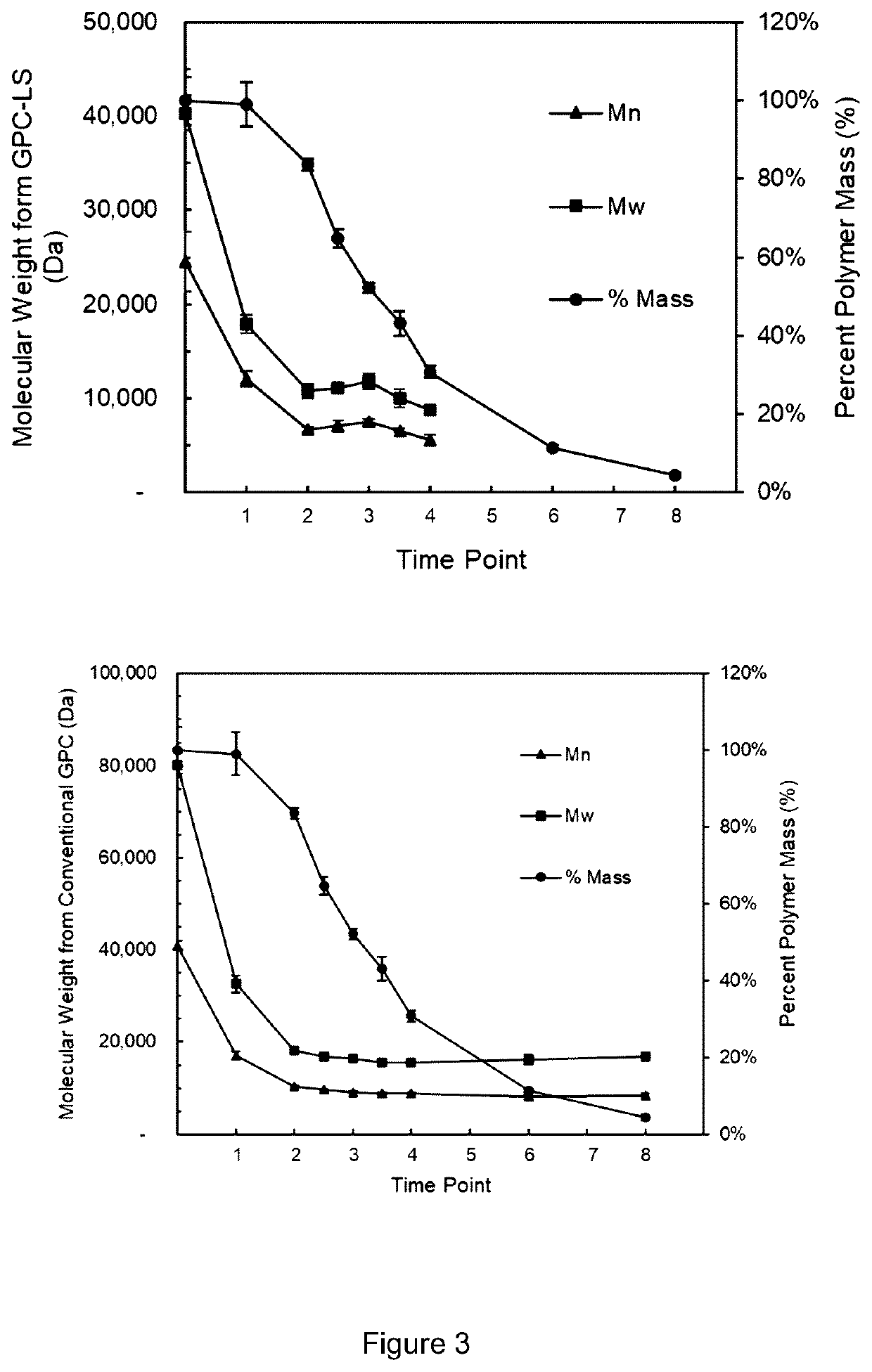Methods for extracting and analyzing compounds from implanted and excised medical devices
an extracting method and compound technology, applied in solvent extraction, separation processes, instruments, etc., can solve the problems of increasing the difficulty of reintervention, difficult detection, quantification, and characterization of biodegradable polymers in medical devices, especially in implanted and excised medical devices
- Summary
- Abstract
- Description
- Claims
- Application Information
AI Technical Summary
Benefits of technology
Problems solved by technology
Method used
Image
Examples
example 1
n of Biodegradable Polymers and Pharmaceutical Agents from the Naïve Drug Eluting Stent (DES)
[0078]The following is the typical polymers and pharmaceutical agent extraction procedure from the naïve DES. The naïve DES was collected by removing the packing. The stent was then soaked in 5 mL of saline solution 30 seconds with light agitation. The stent was then dried by lyophilization immediately.
[0079]The extraction solutions could be combined if necessary and then dried by air / nitrogen flow, vacuum, or lyophilization. Gentle heat could be provided during the drying depending on polymer, pharmaceutical agent, and other compounds types. Heat should not degrade or change the target polymers, pharmaceutical agents, and other compounds for analysis.
[0080]After removing the extraction solvents, dried polymers, pharmaceutical agents and other compounds extracted from the stent could be used for analysis with different characterization techniques including nuclear magnetic resonance (NMR), G...
example 2
n of Biodegradable Polymers and / or Pharmaceutical Agents from Excised Medical Devices in Tissues—Drug Eluting Stents (DESs)
[0081]In one embodiment, the coronary artery tissue surrounding the stent was sliced into fine pieces. Each sample, containing coronary artery tissue and stents, was submerged in 0.5-10 mL of one, multiple, or mixture of the following solvents including water, methanol, ethanol, acetone, dichloromethane, chloroform, THF, hexane, acetonitrile, toluene, DMAc, DMF, DMSO, HFIP and ethyl acetate. The polymer was left to dissolve. The solvents or solvent combinations selected were based on the target polymer, pharmaceutical agent, tissue, and other compounds types. The extraction solvents selected should not degrade, react, or modify the target polymers, pharmaceutical agents and other compounds for analysis. The extraction solvents selected should not extract other unwanted tissues such as proteins, lipids, nucleic acids, from the sample complex which interference wi...
example 3
and Characterization of Extracts (Biodegradable / Biostable Polymers, Oligomers, Pharmaceutical Agents and Other Compounds) from Medical Device
[0083]GPC characterization was used to determine the mass, molecular weights and chain topology of extracted polymers, oligomers, pharmaceutical agents and other compounds from the medical device. The GPC analytical conditions including GPC instrument model, detectors, separation columns, mobile phase, calibration type, calibration standard type, concentration of standards, flow rate, analysis temperature, injection volume, etc. were optimized for each medical device.
[0084]A typical GPC instrumentation and conditions are shown in the following table
ModelHigh Performance GPC System (Tosoh EcoSEC) HLC-8320GPC from Tosoh Bioscience LLCDetectorsRefractive Index, Light Scattering, UV at 278 nm and ViscometerGPC Columns2 × TSKgel GMHHR-MMobile phaseCHCl3GPC ColumnPolystyrene Standards includes 800 Da, 1 kDa, 2 kDa, Calibration7 kDa, 24 kDa, 60 kDa, 1...
PUM
| Property | Measurement | Unit |
|---|---|---|
| Temperature | aaaaa | aaaaa |
| Time | aaaaa | aaaaa |
| Molecular weight | aaaaa | aaaaa |
Abstract
Description
Claims
Application Information
 Login to View More
Login to View More - R&D
- Intellectual Property
- Life Sciences
- Materials
- Tech Scout
- Unparalleled Data Quality
- Higher Quality Content
- 60% Fewer Hallucinations
Browse by: Latest US Patents, China's latest patents, Technical Efficacy Thesaurus, Application Domain, Technology Topic, Popular Technical Reports.
© 2025 PatSnap. All rights reserved.Legal|Privacy policy|Modern Slavery Act Transparency Statement|Sitemap|About US| Contact US: help@patsnap.com



